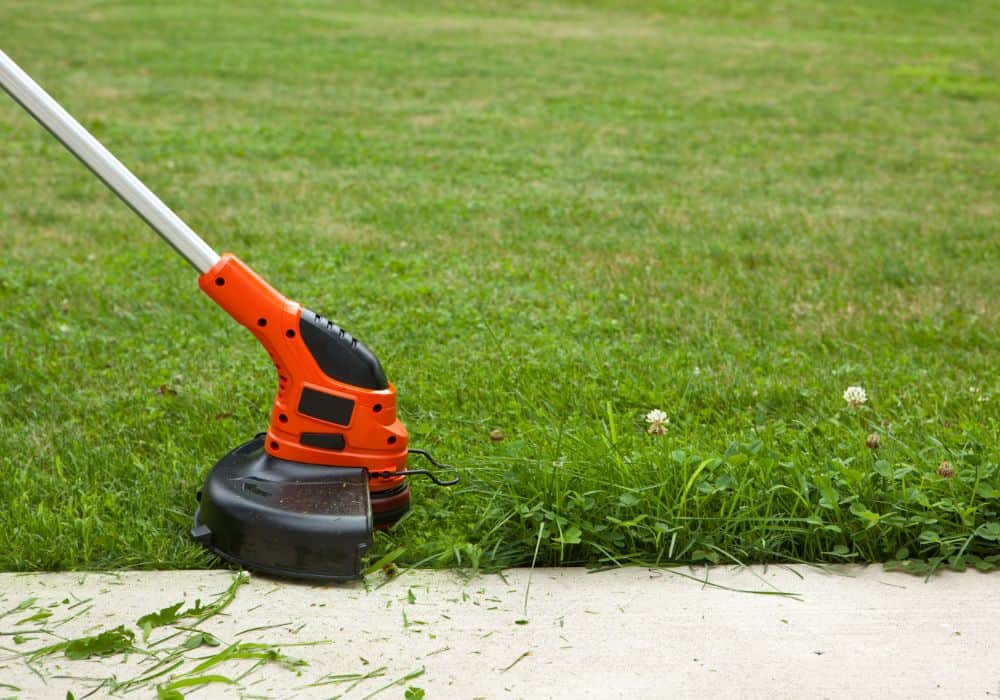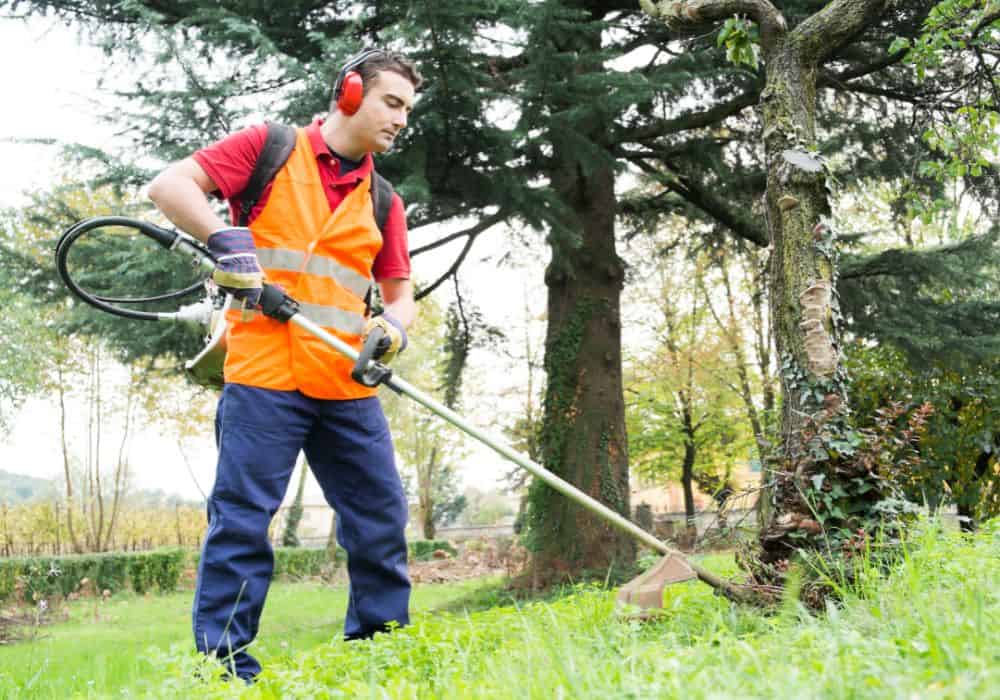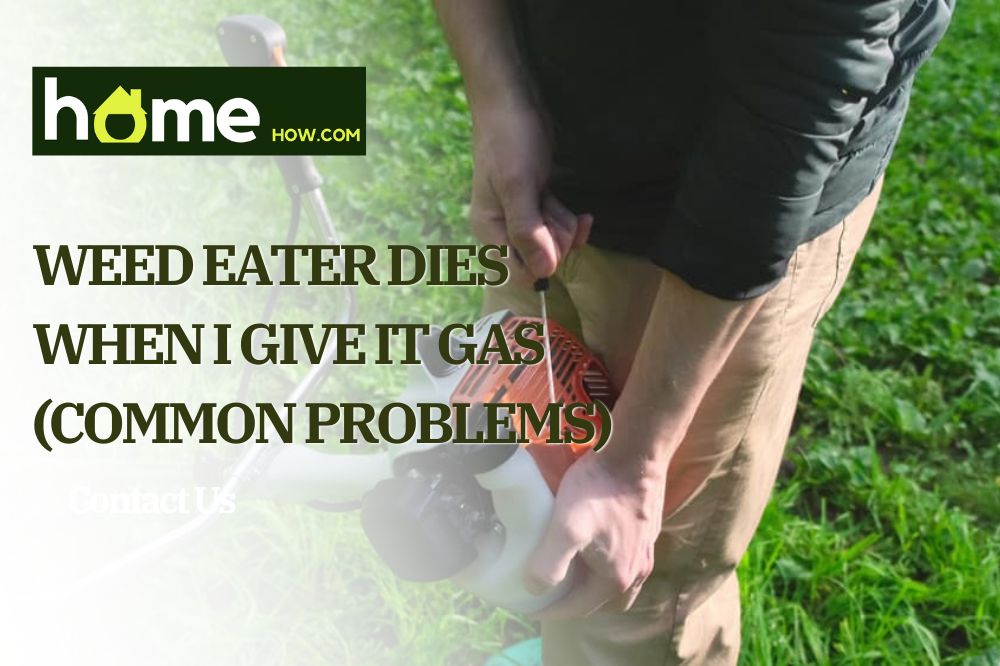If you are a homeowner, you know how valuable your weed eater is, especially in the wintertime when weeds run rampant.
However, they can also be troublesome as there are so many components that have to work together in just the right way in order for them to run properly.
If you are reading this article, you may be experiencing an issue that’s all too common. My weed eater dies when I give it gas! What do I Do?
In this article, we discuss why your weed eater is dying when you give it gas and what you can do about it!
Why Does My Weed Eater Die When I Give It Gas?
If your weed eater is dying when you give it gas, there are many different reasons this could be. The problems range anywhere from a clogged component to bad fuel!
A little bit of troubleshooting should help you find the source of the issue. Here are the most common reasons why your weed eater is dying when you give it gas:
1. Gas Issues
It may seem obvious, but sometimes it is the simplest things that are giving us the most issues, and these are things we seem to look over at first. One reason your gas weed eater is dying when you give it gas is that there is not enough gas in the gas tank.
If there isn’t enough gas in your weed eater, when you throttle it, it will die because it doesn’t have enough gas flowing through it to keep it going.
Also, be sure you put the right amount of gas in your weed eater. Sometimes you only need a certain amount, and if you add too much, it won’t run properly.
2. Clogged Fuel Filter
Another possibility is that your weed eater is dying when you give it gas due to your fuel filter being clogged. Filters in any mechanism work by filtering out debris and other impurities from the gas in the fuel tank before it passes through the fuel line.
If you use bad gas, your fuel filter could become clogged, and your weed eater could start malfunctioning as a result.
A clogged fuel filter affects the fuel flow and will allow a small amount of fuel to flow through the filter, so it starts, but not enough to keep it going. To fix this issue, always use high-quality gas in your trimmer.
You can read your weed eaters’ user manual to see if it recommends what gas to use, and don’t use old gas that has been sitting for a long time as the old gas could contain impurities and cause clogging. If you can’t find this in your owner’s manual, opt for a gas that has a high octane rating.
Luckily, this is a very easy fix! Just remove the fuel filter from your weed eater and clean it with a brush, dish soap, and water. Once it is clean, allow it to dry thoroughly before returning it to your weed eater. If you don’t want to clean it, you can purchase a new one inexpensively.
Also, pay attention to your gas cap. If your gas cap is damaged, this could allow junk to enter your gas tank.
3. Clogged Air Filter

A clogged air filter could also cause your weed eater to act up. Air and fuel mix together in the carburetor to cause combustion and start your weed eater. Just like the fuel filter removes impurities from the fuel, the air filter works to remove impurities through the air.
When your air filter is clogged, your engine wont is able to get any air and will die as a result. Your best bet is to replace the air filter or give it a good cleaning to see if this fixes the issue.
4. Damaged Primer Bulb
The primer bulb is responsible for filling the carburetor with the correct amount of fuel as well as helping to prime the engine for starting for the first time when it hasn’t been used in a few days. It is usually located somewhere between the fuel tank and the engine.
It works by creating suction, so if the bulb is cracked or damaged otherwise, it may not be able to suction properly. This could potentially cause leakage resulting in a dying weed eater when you give it gas.
If your primer bulb is the culprit, you will need to purchase a new one. You can usually find them at your local home store or anywhere that you can buy a weedeater. You can also check some places online to see if you can find a replacement cheaper.
5. Check Your Oil

Sometimes we don’t use all of the oil in a container one season and leave it sitting until the next time spring rolls around and we have to use it again. However, old or expired oil can wreak havoc on your weed eater.
Before you put oil in your trimmer, make sure it isn’t expired and hasn’t been exposed to debris due to a faulty seal.
Also, make sure you store oil in a clean, dry area that isn’t too exposed to extreme temperatures.
6. Your Mix Is Wrong
If your weed eater has a 2-stroke engine, it requires a mixture of oil and gas. Getting this fuel mixture just right is key to your weed eater functioning the way it should and prevents damaging your weed eater beyond repair.
The ratio is normally 40:1, but some require a ratio of 50:1. Always check the manufacturer’s instructions to ensure you have the right ratio for your model.
It may not seem like it is a big deal, but getting this ratio even the slightest bit wrong can cause your weed eater to die when you give it gas. Adding too much oil causes the combustion engine to operate poorly.
The same is true with the type of oil you use. You need two-stroke oil specifically made for your model, which you can find in the user manual.
7. Check Your Carburetor

Just like the air filter and fuel filter, the carburetor can become clogged as well. To unclog the carburetor, you will need to use a motor treatment. This may fix your issue, but if not, there are a few other things in the carburetor that need to be addressed.
However, you will need to take apart your carburetor before proceeding. It sounds scary but it is actually very easy. All you need is a screwdriver to loosen the screws.
You want to make sure you have a rebuild kit before you begin in case you accidentally damage any gaskets.
Adjust Your Idle Speed
Once you have your carburetor taken apart, you will want to test your current idle speed. If your idle speed is too low, it is likely the reason your weed eater is dying when you throttle it. In this case, you will need to adjust the idle speed.
First, look behind the air filter and locate the screw that adjusts the idle. Using a screwdriver, turn the screw in ¼ turns until the problem no longer persists.
Problem With The Diaphragms
The diaphragm is located on the side of the carburetor on the inside. It is made of plastic and has small flaps. Sometimes these flaps get damaged and need to be replaced.
Luckily you can replace them cheaply and easily with a diaphragm repair kit! Check the user manual to see which repair kit you need for your specific model.
On the other side of the carburetor is the metering diaphragm. To access it, you will need to locate the set of screws covering it and loosen the screws with a screwdriver. It will feel similar to a t-shirt and helps regulate the engine speed.
If it seems worn out, you should replace it immediately. Now you can reassemble your carburetor and see if it is working properly!
8. Exhaust problems
Finally, you should see if the exhaust is the issue. There are a lot of different components of your weed eater that are susceptible to clogging, and your exhaust is one of them.
Luckily, if you suspect your exhaust is clogged, you can simply clean it. You should make a habit of cleaning your exhaust on a regular basis to ensure your weed eater stays in tip-top shape.
Not cleaning it regularly can cause excess buildup and result in clogging.
Conclusion
Although there are many things that could cause your weed eater to die when you give it gas, using these tips to troubleshoot will likely have your weed eater up and running in no time!
Remember, regular maintenance is key to keeping your weed eater running properly, so be sure to check the filters and clean the engine regularly.
We hope you found this article helpful! If you have any questions or comments, let us know in the comment section below!
